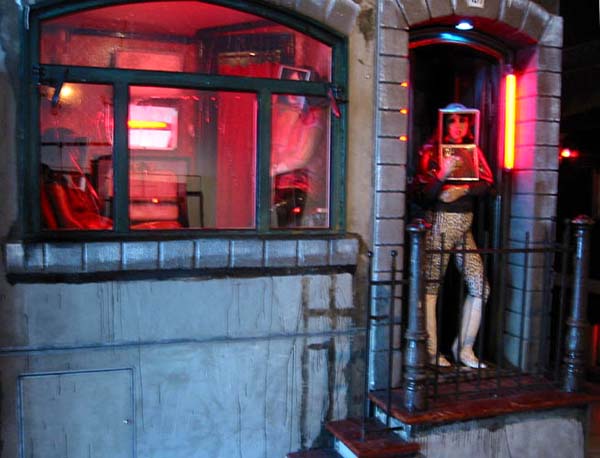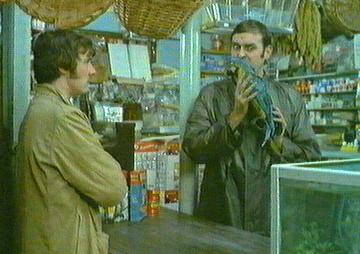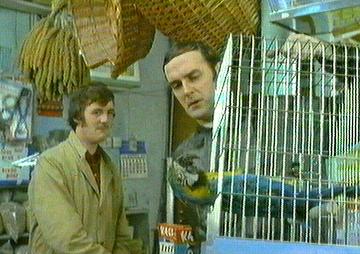The year 2006 marks the 400th anniversary of Dutch contact with Australia. Both in Australia and in The Netherlands special attention will be paid to the wide ranging and friendly ties between the two countries. In both countries an extensive program of activities is planned, including exhibitions, scientific symposia, and exchanges in the field of sport, culture and science.
In The Netherlands, the programme of activities is coordinated by the project bureau of the VOC Fund (Bureau Netherlands - Australia 1606-2006), in cooperation with the Australian Embassy. For information on the program and the registration of activities, please contact:
VOC Fonds
Groot Hertoginnelaan 27, 2517 EB Den Haag.
website www.vocfonds.nl
Australian Embassy
Carnegielaan 4, 2517 KH Den Haag.
website http://www.australian-embassy.nl/
-------------------------------------------------------------------------------
website colophon
The VOC Fund has produced this website for the celebrations of Netherlands-Australia 1606-2006. The historical information was offered by the Nationaal Archief in The Hague (see separate colophon)
Texts
Foundation VOC Fund and the Netherlands Embassy in Canberra
----------------------------------------------

Launch of the programme for the Adelaide Festival 2006 On October 10 the programme for the Adelaide Festival was launched, already including the Amsterdam Sinfonietta Orchestra, Kim Bowman's Black Wind, the dance performance Stau by Anouk van Dijk and lectures by Dutch architect Lars Spuybroek. Also participating from the Netherlands in the Writer's Week of the Adelaide Festival are: Moses Isegawa, Tim Krabb� and Tessa de Loo.
--------------------------------------------------------------------------------------------
Opening exhibition On October 6th, the exhibition `Australia, the land and the people` was opened in the Leiden Museum of Ethnology. For the first time, a Dutch museum holds a large exhibition on Australia. On thousand square metres, familiar and unfamiliar objects as well as film reports can be viewed. The exhibition has been developed in close cooperation with specialists from the South Australian Museum of Adelaide.

from rmv.nl
For the first time ever, a Dutch museum is organising a large exhibition about Australia. A thousand square metres of surprising familiar and unfamiliar objects from the museum’s own collection, objects on loan from other Dutch museums and Australia, as well as specially produced film reports. Part of the museum’s permanent exhibition (Oceania) even has to make way temporarily for this one. There has been close cooperation with specialists close to the source, from the South Australian Museum of Adelaide, Australia. ...
The Europeans who arrived on the coast of Australia in 1606 found a country that, in European eyes, was still ‘unoccupied’. Nothing had been cultivated, fenced off or claimed as property. Accordingly, they called Australia an empty country. A tragic misunderstanding was born. The contacts between immigrants and Aborigines were marked by this misunderstanding until well into the twentieth century. It has only been in recent years that culture and spirituality of Aborigines have come to be viewed as a valuable and unique part of the Australian national identity. Based on five themes, four centuries full of misunderstanding, confrontation, adaptation, maintenance of power and acceptance are explored in depth.
--------------------------- http://netherlands-australia2006.org.au/
This large exhibition on Australia shows different aspects of this diverse and interesting continent. Among other themes, the exhibition tells the story of the different Aboriginal communities in Australia, the spiritual importance they attach to nature and land, and the first encounters of these communities with settlers from Europe.
| Organiser | National Museum of Ethnology, Leiden. |
| When | October 7 2005 - August 27 2006 |
| Where | Steenstraat 1, Leiden |
| Contact | 071-5128437 |
| Visitors info | http://www.rmv.nl |
---------------------------------------------------
yes they are talking about the same exhibition. It is disturbing to see the difference in emphasis on indigenous issues. This is an exhibition that is deserving of close examination
-------------------------------------------------
Meanwhile the Australian press release on the site defines the four themes as follows
400 years of bilateral relations
The year 2006 marks the 400th anniversary of the start of the relationship between Australia and the Netherlands. In 2006, both countries will celebrate this friendship. The special nature of the relationship that the two countries have shared in the past, and share now, is a good reason to do so. In both countries a programme of activities is under preparation. The programme will contain several exhibitions, symposia, and exchanges in the fields of sports, culture and science. Through these activities the relationship between Australia and the Netherlands will be further intensified for the future.
Four themes
The special nature of the relationship between Australia and the Netherlands will be expressed in four central themes:
• Dutch voyages of discovery during the VOC-era: from �Terra Australis Incognita� to �New Holland�.
The Dutch contacts with Australia in the period 1606-1770 are the first theme of the celebrations. In this period many Dutch ships visited Australia, such as the Vergulde Draeck, the Heemskerck, the Eendracht, the Batavia, the Geelvinck, the Zuytdorp and the Zeewijk. Dutch seafarers also came into contact with the indigenous peoples of Australia during that period. Some of these encounters are documented and live on in the oral tradition of the Aborigines.
• The Netherlands as the fourth ally in the defence of Australia during the Second World War
A second and less well-known aspect of the relationship is the contribution of the Dutch armed forces to the defence of Australia during the Second World War. The Netherlands was closely involved in the defence of Australia as one of the four allies (alongside the United States, the United Kingdom and Australia itself). The Merchant Navy, the Royal Netherlands Navy, the Royal Netherlands Air Force and the Royal Netherlands East Indies Army made a significant contribution to the struggle by providing personnel and equipment. In The Netherlands, Australian troops contributed to the liberation of The Netherlands in 1945.
• Emigration of the Dutch to Australia, 1947�1971
The emigration waves of Dutch people to Australia in the 1950s and 60s forms the third theme of the celebrations. Between 1947 and 1971, some 160,000 Dutch people emigrated to Australia, mostly from the Netherlands, but some relocated from the Dutch East Indies (present-day Indonesia). Today the Dutch community makes up over 1.35% of the Australian population. Some 90,000 people in Australia are of direct Dutch descent (the first generation); there are also approximately 140,000 Australians with at least one parent of Dutch descent (the second generation). The third generation of Dutch Australians is estimated at 40,000.
• The Netherlands now: present-day relations
The fourth and final theme of the celebrations in 2006, is the friendly relations between the Netherlands and Australia today. Australia and the Netherlands are in many ways similar countries, forming a natural partner for each other at the other side of the world. Both countries are active in their own region, are progressive when it comes to science, culture and design, and have a special interest in sports.
Trade relations between Netherlands and Australia are modest, but growing. The Netherlands is a major investor in Australia and a medium-sized trading partner for Australia within the EU. The Netherlands and Australia share multiple and varied cultural contacts. Each year some 60,000 Dutch people visit Australia. Approximately 4,700 young Dutch people go to Australia each year under the Working Holiday Scheme, making the Netherlands the country of origin of the fourth largest group of young people to visit Australia under the scheme. Each year between 60,000 and 80,000 Australians visit the Netherlands.
tags






















